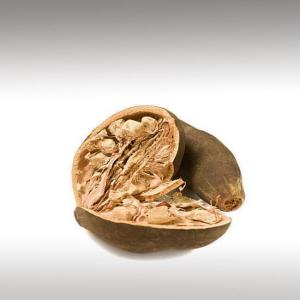
BAOBAB SEED OIL (ADANSONIA DIGITATA) - BASE OILS

BASE / GENERAL DATA
Information submited: August 1, 2014 Modified: April 3, 2018 By: OperaDreamhouse
Adansonia Digitata is the most widespread of the Adansonia species on the African continent, found in the hot, dry savannahs of Sub-Saharan Africa. It also grows, having spread secondary to cultivation, in populated areas. English common names for the Baobab include Dead-Rat tree (from the appearance of the fruits), Monkey-bread tree (the soft, dry fruit is edible), Upside-Down tree (the sparse branches resemble roots).
The trees usually grow as solitary individuals, and are large and distinctive trees on the savannah, in the scrub, and near settled areas, with some large individuals living to well over a thousand years of age. The tree bears very large, heavy, white flowers. The fruits are filled with pulp that dries, hardens, and falls to pieces which look like chunks of powdery, dry bread. The African Baobab's fruit is 15 to 20 centimetres. It contains 50% more calcium than spinach, is high in antioxidants, and has three times the Vitamin C of an Orange. It is sometimes called a superfruit.
Baobab tree whose seeds make an oil that is luscious and has a wonderful aroma. Called "The Tree of Life", this massive tree lives to be well over 100 years old - some sources saying 500 years.
The aroma is mild and nutty, and is a golden liquid. The consistency of baobab oil is rich and thick.
Baobab oil has a high essential fatty acid content including oleic, linoleic, and linolenic. Oleic acid is a good skin penetration enhancer.Linoleic and linolenic fattyacids help maintain the health of cell membranes.
The trees usually grow as solitary individuals, and are large and distinctive trees on the savannah, in the scrub, and near settled areas, with some large individuals living to well over a thousand years of age. The tree bears very large, heavy, white flowers. The fruits are filled with pulp that dries, hardens, and falls to pieces which look like chunks of powdery, dry bread. The African Baobab's fruit is 15 to 20 centimetres. It contains 50% more calcium than spinach, is high in antioxidants, and has three times the Vitamin C of an Orange. It is sometimes called a superfruit.
Baobab tree whose seeds make an oil that is luscious and has a wonderful aroma. Called "The Tree of Life", this massive tree lives to be well over 100 years old - some sources saying 500 years.
The aroma is mild and nutty, and is a golden liquid. The consistency of baobab oil is rich and thick.
Baobab oil has a high essential fatty acid content including oleic, linoleic, and linolenic. Oleic acid is a good skin penetration enhancer.Linoleic and linolenic fattyacids help maintain the health of cell membranes.

SPIRITUAL PRACTISES DATA

MEDICINE / HEALTH DATA

BEAUTY / COSMETICS DATA

FOOD / COOKING DATA
COMMENTS
No comments.


